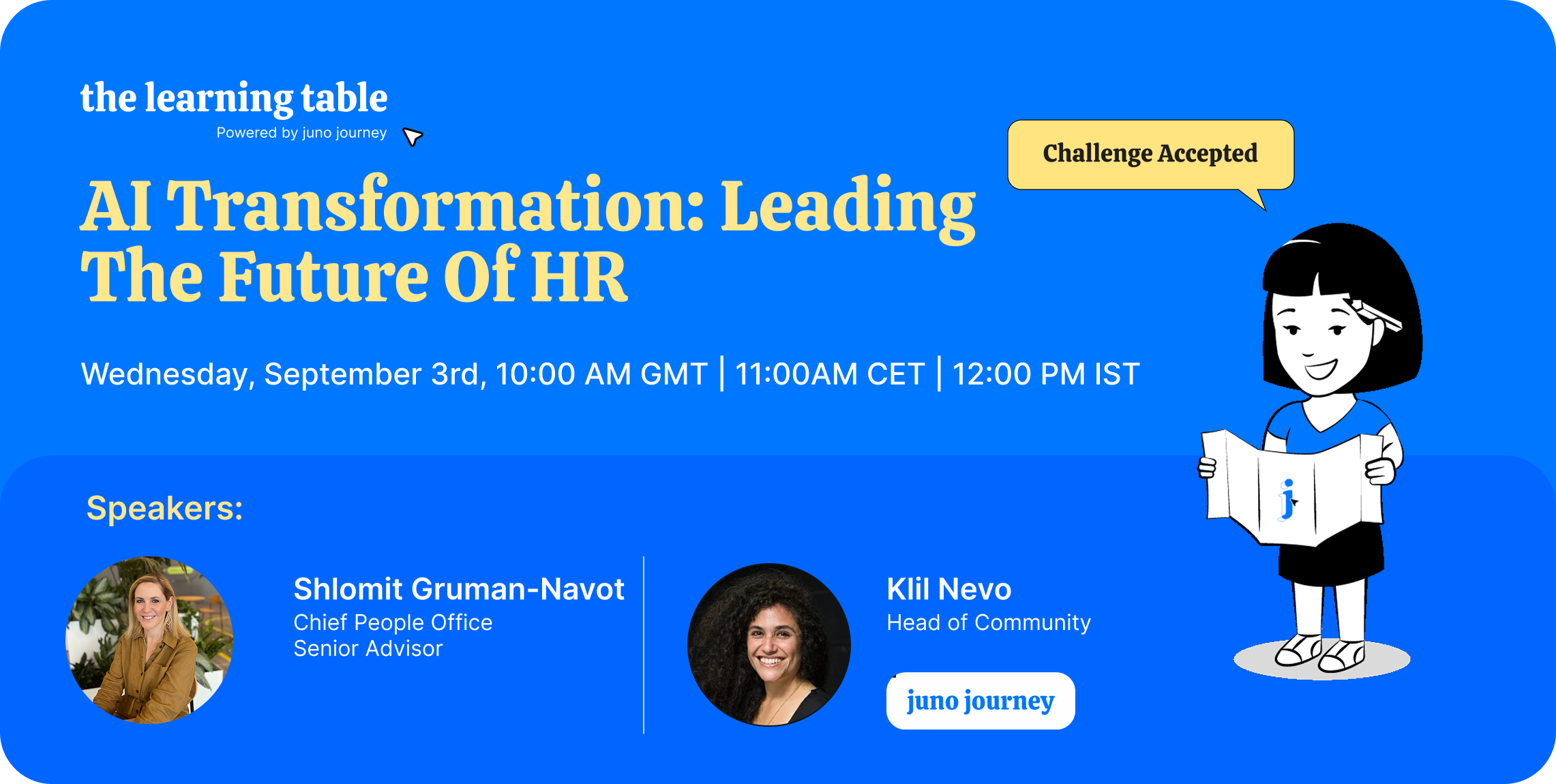
ICYMI: Challenge Accepted #3 - AI Transformation: Leading The Future of HR
Leading the Future of HR and L&D with AI, featuring Shlomit Gruman-Navot
Our latest Challenge Accepted session took on one of the biggest questions facing organizations today: how do we lead AI transformation in HR and L&D?
We were joined by Shlomit Gruman-Navot — senior advisor, transformational leader, and culture-first strategist — who cut through the hype with honesty, practical examples, and a whole lot of wisdom. This was not a “future of work” keynote. It was a frank, collaborative conversation about what’s really happening inside organizations right now.
Setting the Stage
AI is everywhere. It’s in the headlines, in boardrooms, in hallway conversations. But for HR and L&D leaders, the question isn’t if — it’s where do we even start?
“AI is changing the ways of working as we speak. There is no other way than to embrace it. But if you don’t do it with people, any transformation will fail.”
The chat immediately lit up, with participants sharing both excitement and anxiety: what does adoption look like? How do you prove ROI? How do you keep people engaged, rather than resistant?
From Hype to Reality
One of the first big reframes: AI transformation is less about technology, and more about culture.
Shlomit reminded us that most AI initiatives fail not because the tools don’t work, but because adoption doesn’t stick. The real challenge isn’t picking the right tool — it’s creating the mindset and psychological safety that allow experimentation, iteration, and failure.
Common pitfalls she highlighted:
- Starting too big and trying to “boil the ocean.”
- Implementing tools without piloting with real users.
- Treating AI as cost-cutting instead of work-redesign.
Instead, the advice was clear: start small, start with pain points, and bring people along.
Practical Use Cases (That Actually Work)
Participants wanted to know: what’s proven so far? Where is AI already adding value in HR and L&D?
Shlomit shared several concrete examples:
- Recruitment: reducing time-to-hire by 50–80% by automating resume screening and interview insights.
- Operations: freeing HR from repetitive queries with AI-powered agents.
- Performance management: connecting fragmented feedback into meaningful insights tied to company goals.
- People analytics: linking attrition and engagement data directly to business impact.
But she stressed a key caveat: AI is augmentation, not replacement. The best outcomes come when technology supports — rather than substitutes — human judgment and experience.
The Mindset Shift
Perhaps the most powerful part of the session was the discussion around mindset.
Shlomit described the difference between “passengers” and “pilots”:
“People with a pilot mindset — curious, resilient, optimistic — adopt AI faster. In the AI era, you’re less of an expert and more of an explorer.”
For organizations, this means creating cultures where experimentation is safe, failure is expected, and learning is continuous. As one participant summarized in the chat: “We’re not just HR partners anymore — we’re change management heroes.”
Adoption Is the Hard Part
Several community members raised the real-world challenges of adoption: tools that no one uses, resistance from long-tenured employees, and the constant overload of too many systems.
The group surfaced some guiding principles:
- Make it relevant: Tools must solve a real problem employees care about.
- Meet people where they are: Don’t expect engineers to read long emails; integrate into workflows.
- Pilot relentlessly: Experiment, kill what doesn’t work, and only scale what sticks.
- Connect the dots: Synchronize tools so people don’t get lost in fragmented systems.
Closing with Curiosity
The session ended with an honest reflection: no one knows exactly what HR and L&D roles will look like in 2–3 years. But we do know this: adaptability will matter more than prediction.
“There’s no playbook for AI. We’re inventing it as we go. The only way to stay ahead is to keep learning, experimenting, and adapting.”
The conversation left participants energized, pragmatic, and maybe just a little braver about tackling the unknown. Because AI transformation isn’t about replacing us. It’s about amplifying what we can do — together.
Stay tuned for our next Challenge Accepted session, and if you missed this one, keep an eye out for the recording. You’ll want to catch it.